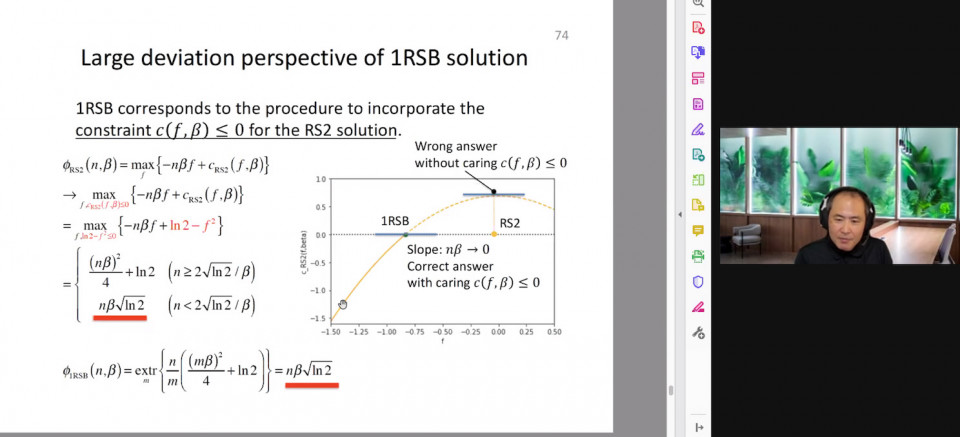Information Theory SG Seminar by Prof. Yoshiyuki Kabashima on June 23, 2021
With great honor, we have invited Prof. Yoshiyuki Kabashima to our information theory seminar to give a stimulating talk about “introduction to the replica method” on 23rd June. Replica method is a physics-based technique developed for analyzing disordered many-body problems, which is now becoming popular more in information science using the structural similarity between problems from these two different fields. Prof. Yoshiyuki Kabashima is a master of the replica method. He applied this method to many problems in information theory, such as CDMA, compressed sensing, clustering of networks, error correcting codes, etc.
The talk contains two parts. In the first part, as an example of the concept, he explained the mathematical similarity of three problems whose origins are unrelated with one another--random energy model (Physics), error correcting codes (information theory) and random k-SAT problem (theoretical computer science). A unified perspective is the common structure of the three examples is the conditional distribution, and the key to solve the problems is the assessment of the average free energy. The replica method provides a systematic way to performing the configurational average. Even the mathematical justification is still an open problem, there is no known example to which the replica method leads to wrong results by appropriately taking into account the replica symmetry breaking if necessary.
In the second part, Prof. Yoshiyuki Kabashima demonstrated the calculation of replica method using an example of random energy model of spin glass. This simple model has an exact solution without using the replica method. One can see how replica method can provide the correct solution by taking care of the assumptions of replica symmetry and 1-step replica symmetric breaking (1RSB) in different temperature ranges. In the end, he gave an expert perspective of large deviation statistics of replica method and 1RSB solution.
Many excellent questions and stimulating discussions have happened during the 2.5-hour seminar. We absorbed by the world of “replicas”. We thank to Prof. Yoshiyuki Kabashima for giving us this great opportunity and hope new ideas of applications of the replica method appear in iTHEMS.
Report by Yingying Xu

